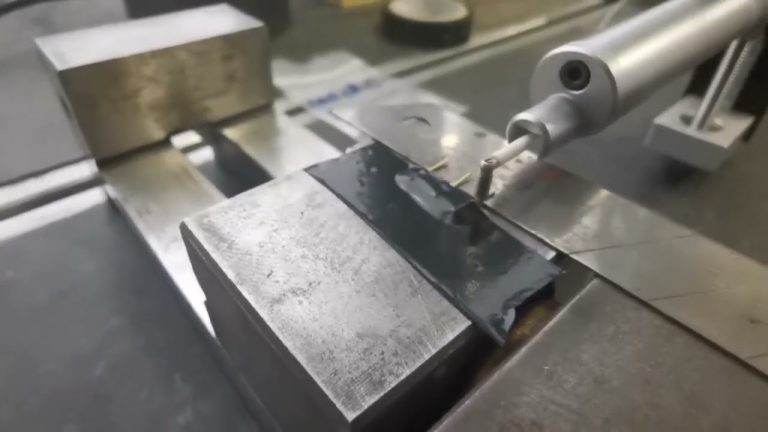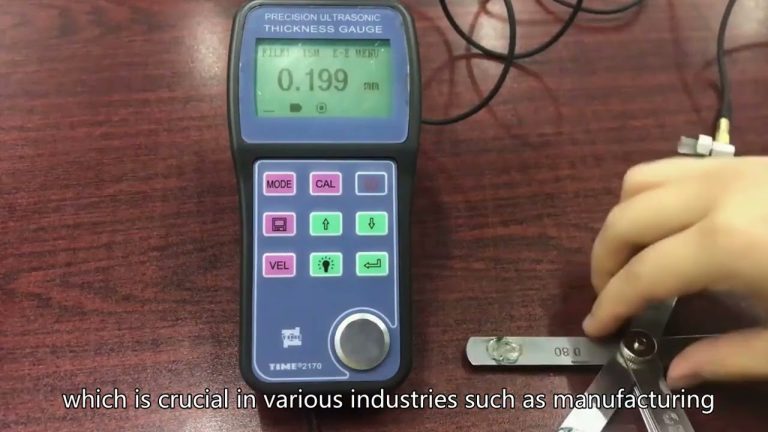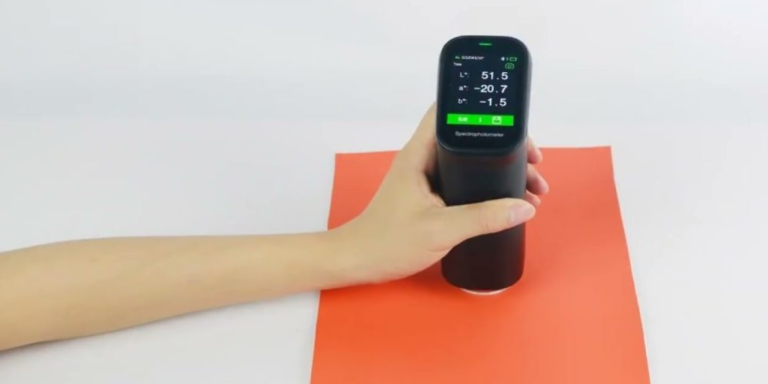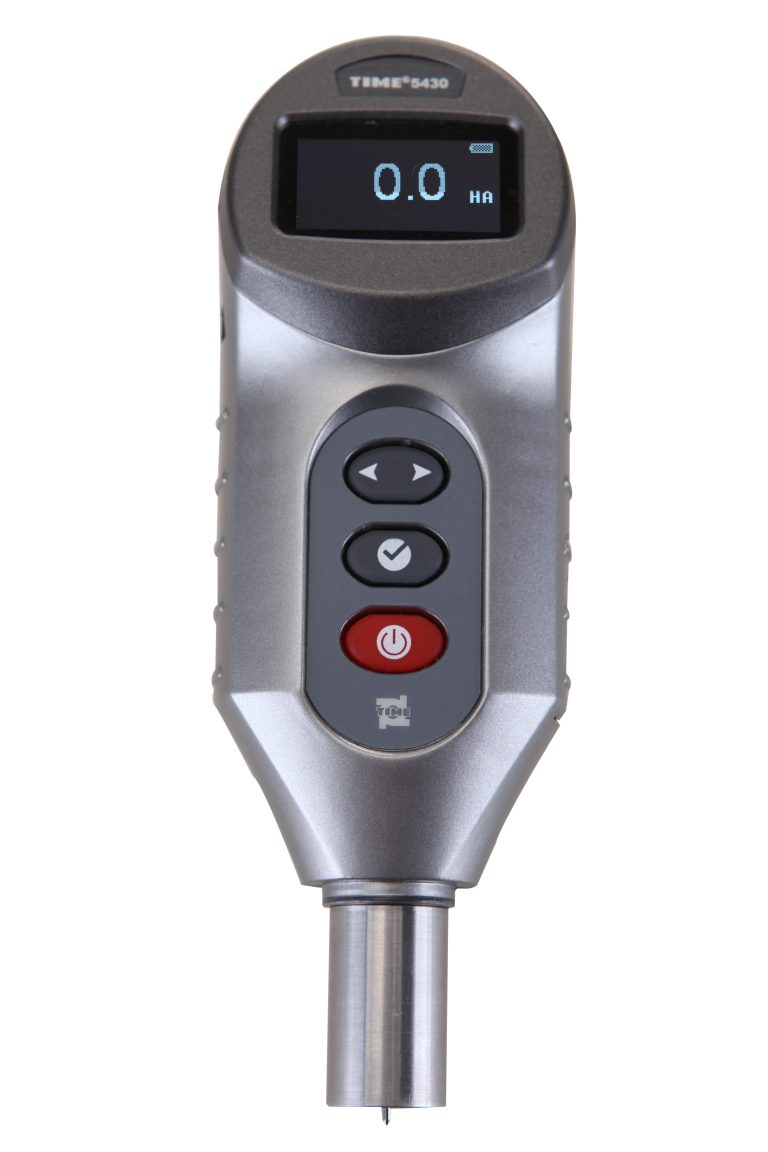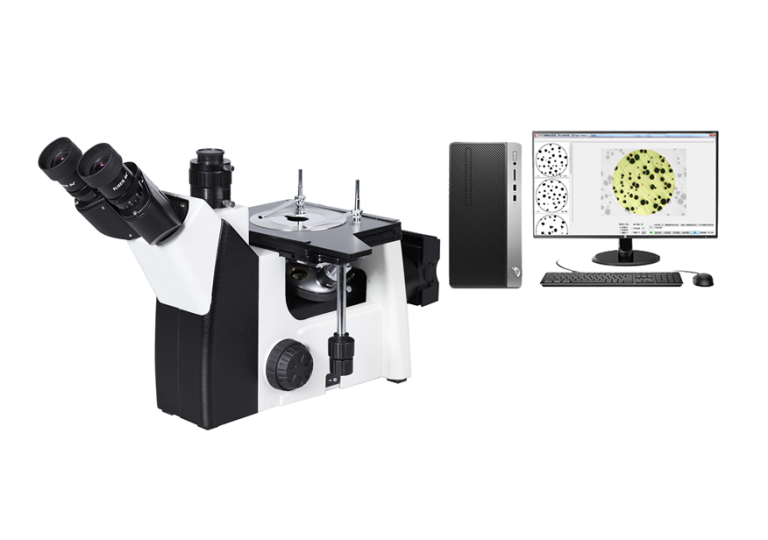Test specimens and requirements:
Test specimen: Corrugating roller
Sample material: steel
Surface treatment: laser cladding
Sample hardness: 50HRC~60HRC, corrugating roller tooth surface hardness is HRC55-60, which can avoid cracks.
Sample thickness: 0.5mm or more.
Testing requirements: Test the surface hardness, which will be slightly machined or ground before testing.
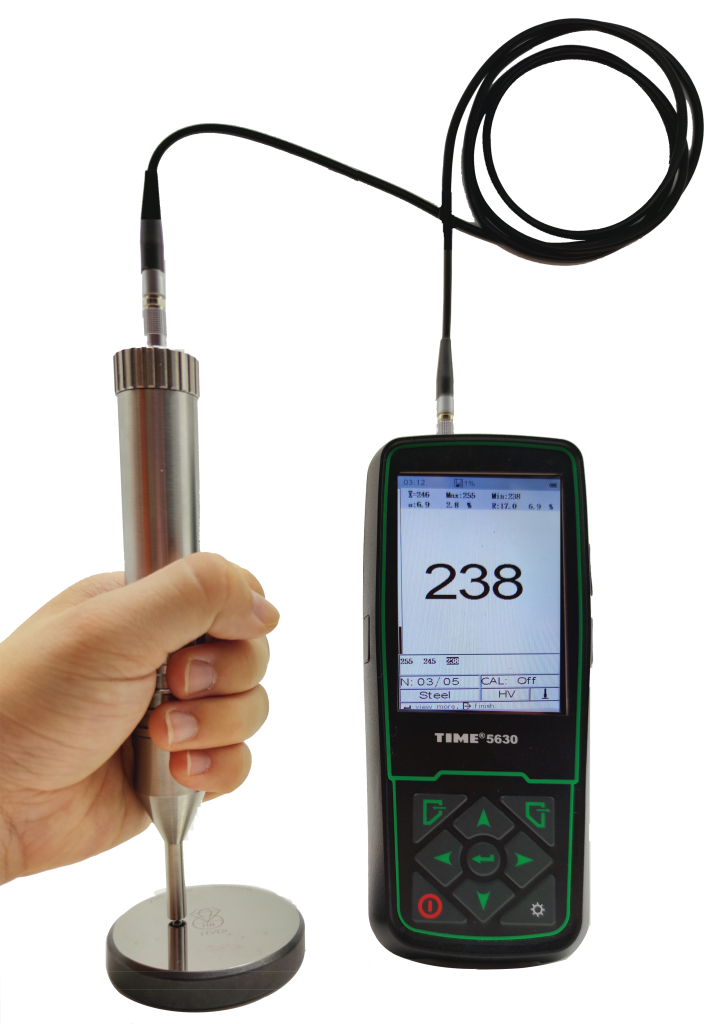
Testing difficulties:
Because the desktop hardness tester is relatively heavy, it can only be used in fixed places in laboratories and workshops. There are many types of corrugated rollers that need to be measured, and the workpieces are relatively large. Using Tyrod-Vickers hardness measurement requires cutting before testing, which places high requirements on the operator and is low in efficiency. The Tyrell’s Rockwell and Brinell hardness testers use macroscopic measurement with high pressure and a large ball diameter of the indenter. The sample will leave obvious indentations after the test (Figure 2). For samples of different soft and hard materials, it is necessary to select and replace the indenter and detection force, and the operation time is long. After testing with a desktop hardness tester, the sample needs to be reprocessed or discarded. Therefore, the Tyrode hardness tester is not suitable for batch testing, on-site testing of large workpieces and non-destructive testing.
The portable Leeb hardness tester adopts the impact principle and calculates the hardness value through the ratio of rebound speed and impact speed. Because the Leeb hardness tester has high requirements on the size, weight and roughness of the workpiece to be measured, it can only measure large and medium-sized workpieces (theoretical requirement is 5kg), and cannot measure smaller workpieces and thin workpieces (including electrochromium layers, spray coatings, nitrogen The hardness of the surface of the workpiece such as the chemical layer), therefore it is impossible to test the hardness of the corrugating roller with a Leeb hardness tester.
solution:
Based on the current measurement difficulties, we recommend using an ultrasonic hardness tester to measure the sample.
Working principle of ultrasonic hardness tester
Ultrasonic contact impedance method. Because of its advantages such as easy portability, fast testing speed, non-destructiveness, and wide application range, it has been widely used in recent decades and has become one of the important and reliable hardness testing methods.
The ultrasonic contact impedance method is a dynamic indentation method that indirectly measures indentation. The vibrating rod with a specific indenter (such as a square pyramid diamond indenter) at the end is stimulated to perform longitudinal ultrasonic vibration, and a certain test force is used to press the indenter into the test surface. The longitudinal vibration of the vibrating rod will be affected by the impedance and resonant frequency. changes occur. The change is a function of the indentation surface area and the effective elastic modulus of the system, and the hardness value is obtained from the frequency change.
Compared with the traditional Tyrode hardness tester, ultrasonic wave has its unique advantages:
- Fast testing and high efficiency
Traditional Rockwell hardness testers, Brinell hardness testers, and Vickers hardness testers need to load a certain force on the workpiece and then unload and hold the load to measure the indentation depth, diameter, and diagonal of the workpiece. It takes about 30 to 50 seconds to test a workpiece. .
The ultrasonic hardness tester uses an electronic measurement method, and the ultrasonic probe sensor measures through changes in ultrasonic frequency. It only takes 3 to 5 seconds to test a workpiece, and the efficiency is increased by more than 10 times.
- Easy to carry and measure on site
When using Rockwell hardness tester, Brinell hardness tester, and Vickers hardness tester to test the hardness, you need to cut the workpiece into small pieces before testing.
The ultrasonic hardness tester is small in size and can perform hardness testing without damaging the workpiece. It is suitable for on-site hardness testing of large or special-shaped workpieces and is widely used in aviation, aerospace, industry and other areas.
- Non-destructive testing of workpieces
Traditional Tyrell’s Rockwell and Brinell measurements use macroscopic measurement methods to make larger indentations.
The ultrasonic hardness tester uses a small-load ultrasonic probe, which will not leave any visible indentation after measurement, so it is suitable for users who require non-destructive testing with high surface requirements. Use ultrasonic and Rockwell hardness testers to test on the same sample (Figure 4). The test indentation is enlarged 412 times. The diameter of the indentation measured by the ultrasonic hardness tester is 0.026mm. The diameter of the indentation measured by the Rockwell hardness tester is 0.484mm. The use of ultrasonic hardness tester does not affect the user’s subsequent assembly and use, and there is no need to worry about product scrapping after hardness testing. It can be used for on-site hardness testing of large batches and large finished workpieces.
- High precision and good stability
The ultrasonic hardness tester uses a small load test force and can test the hardness of the corrugating roller without damaging the workpiece after calibration, effectively ensuring the production quality of the product.

